Text
Annotated Translation
by Dayana Alcarraz & Karina Ramírez Ortega
What is the Annotated translation?
Annotated translation refers to the strategies and decisions that translators have to do at a macro and micro level, describing what processes did the translator choose to apply basing his/her choices on the context the texts comes from and the instructions and specifications present in the translation brief (if provided).
Example 1
Context: The extract is taken from the original story written between 1878-1937 by Horacio Quiroga. The English translation has been taken from the website https://spanishworksandtranslations.wordpress.com/ (copyright Anna Wasserman), which was published on January 4th of 2018.
Source text – El almohadón de plumas (by Horacio Quiroga, 1878-1937)
Al otro día Alicia seguía peor. Hubo consulta. Constatóse una anemia de marcha agudísima, completamente inexplicable. Alicia no tuvo más desmayos, pero se iba visiblemente a la muerte. Todo el día el dormitorio estaba con las luces prendidas y en pleno silencio. Pasábanse horas sin oír el menor ruido. Alicia dormitaba. Jordán vivía casi en la sala, también con toda la luz encendida. Paseábase sin cesar de un extremo a otro, con incansable obstinación. La alfombra ahogaba sus pesos. A ratos entraba en el dormitorio y proseguía su mudo vaivén a lo largo de la cama, mirando a su mujer cada vez que caminaba en su dirección.
English translation made by Anna Wasserman.
Upon the next day, Alicia continued to become worse. The doctor returned. Acute anemia was diagnosed, completely inexplicable. Alicia did not faint again, but she visibly progressed towards death. All day long the lights were on in the completely silent bedroom. Hours passed without hearing the slightest sound. Alicia slept. Jordan nearly lived in the living room, also with the lights always on. He walked continually from one end to the other with untiring obstinacy. The carpet stifled his footsteps. At times he would enter the bedroom and continue his mute pacing along the bed, looking at his wife every time he walked in her direction.
Annotations
Macro strategy
Since there is no translation brief and the environment in which her translation will exist along with the people that this translation will reach is vast, the translator had to make assumptions on the public that would read her text and the purpose of her translation. Taking this into account, it seems that the translator targeted an anglophone audience interested in the Latin American literature. However, the purpose of her translation is to introduce more people to South American writings throughout her interpretations of those works.
Micro strategy
The first characteristic of the original text that first jumps at the reader, is the conjugation of the verbs “constatarse → constatóse” and “pasearse → paseábase”, which as we can see, have the personal pronoun “se” of indirect complement. These forms of the verbs are archaic and unusual to use in a spoken context but are seen in formal language and in poetry. For these cases, the translator chose the sense translation strategy which consists on rendering an unworkable piece of the SL into a neutral form in the TL. Thus, the verb “constatarse” was turned into a passive construction while the verb “pasearse” was rendered into the third person preterite indicative.
However, the reason for the removal of these archaism may be because people from all ages may encounter her interpretations, and as her purpose was to achieve greater audiences, she decided to use simpler constructions and no archaisms in English.
In addition, there is a lot of literal translation that could work as a way of compensation from the previous stylistic loss. The translator decided to preserve the short sentences that Quiroga used to create suspense, as well as their syntaxis without changing the sense.
We can also see a borrowing or direct transfer in the name of Jordan’s wife. To maintain a local feeling in the translation, the translator has chosen to conserve the original name “Alicia”, even when she could have translated as its equivalent “Alice” in English.
The opposite happens with “Jordán”, which the translator has chosen to apply a calque and write it as “Jordan”. Which at a certain level is counterproductive since the same procedure should be applied to both names to keep the local feeling that she wanted to achieve by leaving the original name of “Alicia”. A direct transfer through a transcription of the accent in the name would have been a better option.
Now we’re going to develop an annotated translation on the translation of one of the most challenging pieces of literary translation: Poetry. For this example, we will analyze the translation of a poetry written by Gustavo Adolfo Bécquer (Spanish as a source language).
Source text – Rimas I, IX (By Gustavo Adolfo Bécquer)
Besa el aura que gime blandamente
las leves ondas que jugando riza;
el sol besa a la nube de Occidente,
y de púrpura y oro la matiza;
la llama en derredor del tronco ardiente
por besar a otra llama se desliza,
y hasta el sauce, inclinándose a su peso,
al río que le besa vuelve un beso.
English Translation made by Armand Baker
The dawn moans softly and kisses
the gentle waves as they float by;
the sun kisses the cloud in the East,
and tints it with purple and gold;
the flame slips around the burning
trunk so it can kiss another flame,
and even the willow bends down
to kiss the river that has kissed it.
Macro Strategy
Considering that this was an independent translation that did not count with a translation brief and the creative liberties the author took were only under his control. This translation has as target audience people who are interested in reading poetry that was written during the Romantic era, therefore, many people who are interested in poetry and art in general will read this translation. Another target group is people who are interested in literary translation and has a particular inclination for observing the techniques that are used
2. Micro Strategy
At the level of micro strategy, we can notice that the translator prioritized the accuracy of the translation over the stylistics of the translation. The translator sacrificed the rhyme in order to get an accurate translation.
In Spanish, due to the flexibility of the syntactic order, the words were in different places. In English, however, the syntactic position of the elements is pretty rigid, and it does not change.
Bibliography:
Baker, A. (n.d.). Armand F. Baker. Armand F. Baker. http://www.armandfbaker.com/
Quiroga, H. Cuentos de amor de locura y de muerte. (1st ed.). Mestas Ediciones.
Wasserman, A. (2018, January 4). The Feather Pillow. Collection of Spanish Works & Translations. https://spanishworksandtranslations.wordpress.com/2018/01/04/the-feather-pillow/
#translator#translation#translated literature#art#poetry#culture#education#cool dude#science#writing
3 notes
·
View notes
Text
Translation procedures
by Karina Ramírez Ortega
How translators adapt your favorite novels into different languages?
Do you remember those times, by 2010+, when you could hear teenagers spoiling the end of different titles such as “Divergent”, “Hush hush” or “The Hunger Games” in every corridor of every single high school of THE WORLD? Well, that’s when the young-adult genre started to become so popular, that even Hollywood couldn’t miss the opportunity of making money out of it. Do you want to feel old? The first Hunger Games book was published 14 years ago. And, if you’re a faithful follower of the franchise, and you’re currently wondering “Where is the translation stuff I came here for?” then this blog entry is just what you need.

What I aiming to do is to explain the J.P Vinay & J. Darbelnet translation procedures through a comparison between some extracts from the Hunger Games book and its translation into Spanish made by Pilar Ramírez and analyse which procedures has she applied into her adaptation of the book.
In general terms, Vinay and Darbelnet proposed the model Stylistique comparée in which they made the differentiation between strategy and procedure:
Strategy is the posture or orientation a translator takes to apply it to the WHOLE text. He or she can choose to go towards the Target Text (TT) or the Source Text (ST), towards a “Free” or “Literal” translation or towards Domestication or Foreignization. As for them, they identified the Direct and the Oblique translation.
On the other hand, a procedure is a specific method applied to specific parts or sentences within a text.
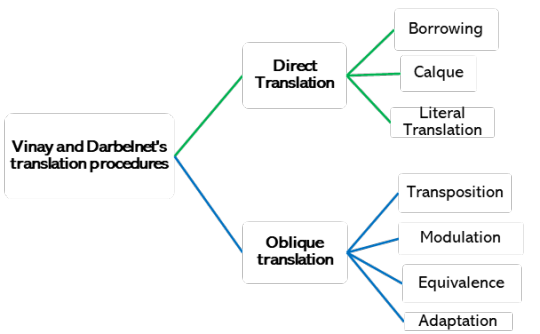
Figure 1 Vinay and Darbelnet described 3 procedures for the direct translation and 4 for the oblique translation.
Direct translation
Table 1 Direct translation examples

Borrowing
Also called loans, borrowings happen when a word from the ST is transferred directly into the TT. This procedure has several purposes: to fill a semantic gap in the Target Language (TL) or to give a local feeling to the TT. In our extract, Prim, the name of Katniss’ sister seems to be an example of a borrowing since it isn’t translated into Spanish, nor it has changed its morphology in any way, and its purpose seems to be none of the above but for stylistic purposes.
Yet, we must mention that this procedure is usually applied in technical fields and, when the situation requires it, there is a need for transcription: for example, when the Source Language (SL) has a different alphabet than that of the Target Language (TL).
Calque
Calque is often considered a type of borrowing since we must transfer an expression literally by translating each of its elements into the TT taking into consideration the syntax of the TL in the process. To illustrate this process, I have chosen two parts* from our extracts:
Prim’s face → La cara de Prim
Justice Building → Edificio de Justicia
In both cases, we can see that the words acting as adjectives in the TT (Prim’s and Justice) have been transferred to the Spanish translation as they are. Nevertheless, they have been placed after the noun since the Spanish syntax requires adjectives to be in that position.
When applying Calque, another option for the translator is to ignore the TL syntax and maintain that one of the SL, however it can result in an awkward-sounding translation not recommended when the languages in both texts don’t share the same roots.
Literal translation
As the name shows, this is a word-for-word translation. We transfer words, phrases, or whole sentences into the TT with their direct equivalents in the TL. As mentioned by Waliński (2015): “Using this procedure, the translator focuses predominantly on adhering to the linguistic rules of the target language”.
In our example: “Where’s Haymitch? → ¿Dónde está Haymitch?” we can see that nothing has changed, we keep in both languages the interrogative adverbial (Where-Dónde) followed by the copula be conjugated in 3rd person singular present indicative (is-está) and the direct object (Haymitch in both languages). Of course, in Spanish we have added the “¿” which is not part of the original text, but that’s because we must adapt the translation to the conventions of the TT.
Be careful! We must make sure to convey the same message stated in the ST, if we don’t, we must turn to oblique translation procedures to make sure we preserve the author’s intention.
Oblique translation
Table 2 Oblique translation examples
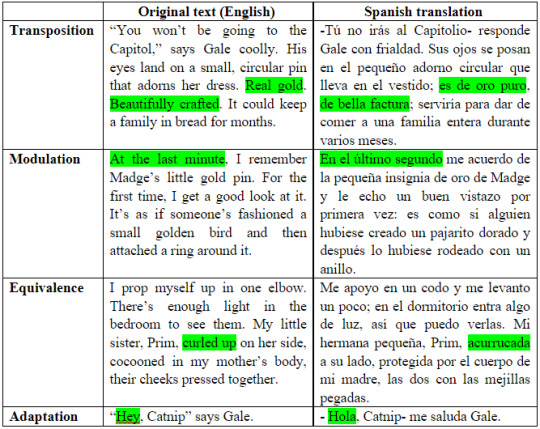
Transposition
This translation procedure implies changing the grammatical category of a word or phrase for another WITHOUT changing the sense or meaning of the message. To illustrate this procedure, we have
Real gold → es de oro puro
In the original, the noun phrase real gold stands by itself, while in the Spanish translation, it has been turned into the subject complement de oro puro.
Beautifully crafted → de bella factura
Here we’ve got another subject complement made of the adverb beautifully and the verb crafted which, for stylistic purposes, has been separated from the main sentence. However, the translator chose to use a prepositional phrase instead, made of the preposition de and the adjective bella modifying the noun factura. Both constructions serve as adjectives, but the grammatical categories of their components are different
Modulation
Modulation acts as an alternative when all the procedures described above have failed to convey a natural message in the TT (even when it is syntactically and grammatically correct). It carries out a change of perspective mostly in phrases or expressions in the SL. To illustrate this procedure, we have the expression At the last minute translated as En el último segundo.
There are several types of modulation, but in this case, the translator has applied the whole ↔ part one. This type is to some extent, self-explanatory; in our example we are using segundo (second) which is a smaller component of minute. Both expressions have the same meaning, yet the Spanish translation conveys the sense of urgence expressed in English by using a smaller unit of time.
Equivalence
Also called idiomatic translation, its primary purpose is to translate the sense. “Using this term to refer to cases where language describes the same situation with different stylistic or structural methods” (Ryan, 2020, p. 16). As we know, languages represent the community in which it lives in, therefore each language will have diverse idiomatic expressions to express similar situations using the referents present in their culture. This is the case for phrasal verbs in English: most of the times they can’t be translated literally because they won’t make sense in the TT and their meaning will be completely lost. That’s the case for curled up, the equivalent of the action that this phrasal verb conveys is the verb acurrucar: the translation transmitted the same meaning by different structural means.
Adaptation
Adaptation happens when one element present in the SL doesn’t exist in the TL, thus this procedure seeks to find an equivalent referent for that element in the target culture. This applies for entities, people, sports, or expressions such as the one present in our example: Hey → Hola. English has a lot of ways to greet someone, all with different nuances. “Hey” is a more informal greeting (sometimes, even considered rude) than “Hi” or “Hello”, used to grab someone’s attention. Since there’s no equivalent in the TL with those characteristics, the translator has adapted it for “Hola”, an informal greeting used by the Spanish speakers. There was the option of “Oye”, but it has been discarded perhaps because it is not used as a greeting, but rather to demand someone’s attention.
So far, we have seen the seven translation procedures proposed by Vinay and Darbelnet. However, that’s not the end! They also described five supplementary translation procedures which you can look at on the bibliography below.
Can you identify any more procedures in the extracts we have just seen? Let us know in the comments.

Bibliography:
Collins, S. (2008). The Hunger Games. Turtleback.
Collins, S. (2009). Los Juegos Del Hambre (1st ed., Vol. 1). MOLINO.
Munday, J. (2016). Introducing Translation Studies (4th ed.). Taylor & Francis.
Ryan, A. (2020). The ideology of translation vs translation procedures. Applied Translation, 14(2), 14-20.
Waliński, J. T. (2015). Translation procedures. University of Łódź, 58.
4 notes
·
View notes
Text
Translation Process
by Anthony Enríquez
Translation is nowadays considered a means of facilitating knowledge in written (and spoken) language to speakers of other languages, thus making it more accessible. Nevertheless, professional translators are in charge of ensuring a quality product, ready and sufficient enough to meet demands. Let us enter into the Translation Process. Numerous studies in the field of translation have been made throughout the years to offer a broad, but precise, account of the approach a translator could adopt when, and most importantly before, translating. (In this entry said process will be included with an explanation of each stage, and further references to help readers deepen their understanding of the translation process. The translation process not only aims to guarantee a quality product, but it also lets the translator determine whether they are capable, or not, of tackling the translation task.
Levels of Reading:
Arguably one of the most important “steps” in the process is that dealing with the levels of reading.
It is divided into stages and takes place (most of the time but not limited to) in the commissioning or assignment stage. It allows the translator (and client) to determine whether the translation task can be conducted. Reading becomes an active process in the greater translation process that assists in identifying the level of familiarity the translator has with the subject matter and their level of expertise (Cragie & Pattison, 2018).
In Layman’s terms, the commissioning or assignment stage occurs before accepting the translation task, where the translator follows the concepts (that will be explained in this blog entry) and then decides if they are up to go ahead with the translation.
Pre-translation Reading: in this stage, the translator is able to observe the text (or material) in the Source Text (ST) and superficially analyze its content by reading it in its entirety(Cragie & Pattison, 2018). The translator is capable of identifying aspects of the material which they would be ready to tackle.
The topic or subject matter: it is essential to the translation process to fully grasp the idea of what is the text (material) about, i.e., the subject matter or topic. It allows the translator to recognize the degree of specialization towards said topic (Cragie & Pattison, 2018). The degrees are general, semi-specialized, specialized (Cragie & Pattison, 2018). Moreover, it is fundamental to determine how familiar one is with the subject matter. And it is also helpful to consider the translator’s prior experience with the particular field of the topic, this can lead to confidently knowing the access to appropriate resources helpful towards the translation process in general.
the terminology
Lexis and register (formal/informal)
cultural references
the style and register
logic and organization of the material
Within this stage, the translator also becomes aware of the purpose of the ST and to what genre it caters to.
In-Translation Reading: after identifying the subject matter and the level of expertise and familiarity with it, the translator must understand the content of the material, with its intricacies, and identify the meaning of it, so as to maintain it in the Target Text (TT) translation (Cragie & Pattison, 2018). It is recommended for the translator to re-read the material during the process of the translation, in order to clarify the logic that it follows, understand elements (most commonly known as chunks) that would need a specific type of approach.
The logic that the material follows is of vast importance in this stage, since the translator must ensure that the cohesion and coherence conventionalities of the TT are sufficed (Cragie & Pattison, 2018).
Post-translation Reading: as mentioned throughout, it is strongly recommended that translators begin with a draft for the TT. In this draft, the translator must read through it to check if something has been omitted that messes with the meaning of ST material, to make sure that said meaning is faithfully and accurately transferred, and to check if all the queries stated in the translation brief have been met so far. It is of utmost importance that the translators ensures a feel of originality in the TT, i.e., that it feels as original material, produced in the Target Language (TL).
The translation brief: the client is in the responsibility of providing relevant information that can guide the translator into meeting the client’s demands with the translation. In the usual form of a rubric, the client specifies and contextualizes, by including basic information such as the source of the ST, the purpose of the material in the TT, and any particular instructions on how to perform the translation task (Cragie & Pattison, 2018). It is also a step in the process where the client can inquire about previous translation of related materials. However, it must be specified that a translation brief is not entirely common in the professional environment. It is something that would happen with a direct client. In addition, the deadline is also included in the translation brief.
Up to this point, we have analyzed the translation process thoroughly through each level of reading, after which we should end up with a revised draft after following the levels of reading. Now, it is strongly recommended to let a translation “rest”. It could be for a few hours or overnight. This is done so as to clear the mind in order to move away from the way in which the translation has be done so far, and to move away from a ‘translation’ bias.
The last step would be to review, revise, and refine the translation without the reference of the ST, because what should be reviewed is how well the message is expressed under the particularities of the TT.
youtube
We recommend you, after the explanation given of the translation process, to watch this video which offers a summarized account of said process. There are 5 steps taken in consideration in this video, but, in order to make a resemblance with the information presented so far, we can say that step 1 to 3 and the three levels of reading are, essentially, the same. It also must be said that the choice of a particular translation strategy can happen in any stage of the translation process after clear understanding of the ST.
Cragie, S., & Pattison, A. (2018). Thinking English Translation. New York: Routledge.
PacTranz. (2017, May 30). The 5-step translation process - it’s best practice for a reason! [Video]. YouTube. https://www.youtube.com/watch?v=tzlIcW_9FoI
#light academia#dark acamedia#university#translation#processing#culture#language#science#english#knowlegde
3 notes
·
View notes
Text
Translation Theory
by Alexander Campaña and Anthony Enríquez
Throughout the history of translation studies, it was believed that the most important criterion to evaluate whether a translation is successful or not was its “equivalence” or “faithfulness” to the source text. Despite the positive effects that this type of translations has, we must consider that “translation is a complex human activity and study of translation should be descriptive” (Du, 2021)
In that sense, the Skopos theory from Hans Vermeer provides a different view on translation, considering it as an action with purpose. Furthermore, it attempts to provide a new outlook for certain aspects, such as the status of the source text and the target text, the role of the translator, translation standards and strategies, among others.
Skopos theory was developed in Germany in the 1970s by the German linguist and translation scholar Hans Josef Vermeer. According to Du (2012) “Vermeer finds that, according to action theory, every action has a purpose, and, since translation is an action, it must have a purpose too”. The purpose of the translator is specified, explicitly or implicitly, to every translation by the client in the translation brief. The translation brief is the set of instructions or specifications that indicate the target audience and the purpose of the assigned translation.

Vermeer explains the skopos rule as follows:
Each text is produced for a given purpose and should serve this purpose. The skopos rule thus reads as follows: translate/interpret/speak/write in a way that enables your text/translation to function in the situation it is used and with the people who want to use it and precisely in the way they want it to function. (As cited and translated by Nord, 1997)
This explanation clarifies his view of translation, considering that any translation process should accomplish its purpose by the necessary means, or in other words “the end justifies the means”. For Vermeer, the reader is one of the most important factors determining the purpose of the translation.
The Skopos theory experienced four stages:
Katharina Reiss and the functional category of translation criticism
It is considered the starting point for the scholarly analysis of translation in German. Her ideal translation would be one in which the aim in the target language is equivalent to the content, form, and communicative function portrayed in the source language.

2. Hans J. Vermeer: Skopos theory and beyond
His theory is a functional one, he believed that some translation issues cannot be solved just by linguistics alone but including the action theory and the role of the translator within the whole process.

3. Justa Holz-Manttari and the theory of translational action.
This theory is also based on action theory, it involves every aspect of intercultural transfer. This approach considers that the “purpose of the translational action is to transfer message overcoming culture and language barriers…” (Du, 2012)

4. Christiane Nord’s Function plus Loyalty Principle
Even though Nord gives credit to Vermeer’s Skopos theory, her work marks out some limitations. She states that it is impossible for the translation purpose to satisfy every target reader and elaborates deeply in the relationship between the intention of the original author of a text and the purpose of its translation. “Nord puts forward the “loyalty principle” of Skopos theory: the responsibility of translators towards to their partners in translational interaction” (Du, 2012).

Vermeer based his Skopos Theory on the basis of the theory of action, which states (to put it simply) that actions are ruled by intention, intention of bringing or preventing a change. Moreover, if there are two or more agents, it becomes a theory of interaction (Du, 2012). Translation is a process of interaction between the SL (Source Language) and TL (Target Language). There are many factors to be considered when translating, factors which all have an intention behind them, let it be of interpersonal, communicative, intercultural, or text-processing nature.
Vermeer factored intention, or ‘Skopos’ – Greek for purpose, as the prime aspect of the Skopos Theory. By establishing that actions are ruled by intention, by a purpose, he states in his theory that the priority of the translation process resides in the message and its transferability (and how) to the TT (Target Text) in relation to that of the ST (Source Text). Furthermore, three possible types of purpose have been identified within the field of translation: the overall purpose aimed at by the translation in the translation process, the communicative purpose of the target text in the target situation, and the purpose by a particular translation strategy or procedure (Du, 2012). Notwithstanding, Vermeer credits the term Skopos to the purpose of the TT.
Du (2012) defines that the aspect of utmost importance that rules any translation, according to this theory, is the ‘Skopos rule’, which claims that a translational action is determined by its Skopos in a very Machiavellian manner (that is, that regardless of the means, due to the fact that every text is produced for a given purpose, the TT must serve that purpose).
The Skopos rule has been explained as following: The text/translation (TT) must function within the margins of the situational, cultural, communicative context of the TL, that is, that it must serve a purpose to the people who want to make use of it.
However, it must, as the majority of all texts, be coherent, understandable in the Target Text’s situation (which englobes cultural and other situational variables) and also maintain a faithful relation to the purpose of the ST. This would, in fact, depend on the translator’s interpretation of the ST (Du, 2012).
Vermeer adapts Reiss’s functional text-type model to the Skopos theory, and later established six basic underlying “rules” for the theory. These are:
A translation (Translatum) is determined by its Skopos.
The TT maintains the relation with the message (mainly purpose) conveyed in the ST conventionalities (cultural, communicative, etc.) of the TL. It is an offer of information.
A TT does not initiate an offer of information in a clearly reversible way.
The TT must be coherent.
It must also be coherent with the ST.
All of the rules above are in hierarchical order, with the Skopos rule, mentioned earlier, predominating.
To sum up, Hans Vermeer’s Skopos theory establishes that the purpose within the ST must be transferred to the TT in any particular way, through any particular translation strategy or procedure, and it must be coherent and comprehensible within the context of the TL.
References:
Du, X. (2012). A Brief Introduction of Skopos Theory. Theory & Practice in Language Studies, 2(10).
Jabir, J. (2006). SKOPOS THEORY: BASIC PRINCIPLES AND DEFICIENCIES. Journal of the College of Arts. University of Basrah No, 41, 2.
Nord, C. (2014). Translating as a purposeful activity: Functionalist approaches explained. Routledge.
#linguistics#translation#dark acamedia#light academia#language#english major#culture#history#learning#interesting#translator#translated literature#germany
11 notes
·
View notes
Text
Translation History
by Alexander Campaña
Throughout the history of translation, there have been several crucial translators who have contributed to this field. Do you know some of these essential characters? If you do not know them do not worry, you are going to know them right now!
St. Jerome
Eusebius Hieronymus, or St. Jerome was born in what is known today as Croatia, his mother tongue was Illyrian, however, he was fluent in other languages, such as Greek, Aramaic, Syriac, Arabic, Hebrew, and Latin.

St. Jerome strongly believed that translation should be equal in meaning and style. He “was one of the first notable translators to translate sense for sense rather than word for word” (Faulwetter, 2018). Therefore, he was a pioneer in the field subsequently named “dynamic equivalence”.
One of his most important contributions is translating the Bible from Hebrew and Greek into Latin, which until these days remains the standard Latin version of this holy book and is known as Vulgate.

Vulgate was controversial due to it was the first translation that was not done using a literal translation, but by sense for sense. Additionally to that, “Vulgate relied heavily on the cross-reference of the original Hebrew text- which many Christian scholars at the time ironically believed “tainted” the religion with Judaism” (Faulwetter, 2018).
St. Jerome passed away on September 30, thus the celebration of the International Day of Translators takes place on that date.
Constance Garnett
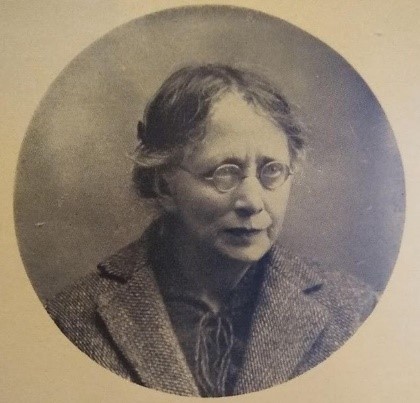
Constance Garnett was born on December 19, 1861, in Brighton, England. In a time when high-level education for women was rather uncommon, she won a scholarship to Newnham College, Cambridge, where she graduated and studied Latin and Greek. Constance married in 1889 to the critic Edward Garnett, who encouraged her to learn Russian.
Soon after, in 1892, she started her career as a translator by translating Russian works for publication by Leo Tolstoy and Ivan Goncharov. In one of her travels to Russia, she met Tolstoy, who asked her to translate his religious works, but Garnett refused as her main goal was to translate novels.
Constance was the translator who took the responsibility for translating the great works of Russian literature into English. She made works from Tolstoy, Goncharov, Gogol, Dostoyevsky, Ostrovsky, Herzen, Turgenev, and Chekhov available to English-speaking readers in the 20th century. She died on December 17, 1946.
Fun fact: “When Constance Garnett did not know the translation of a particular word or phrase, she would sometimes leave it out altogether” (Moser, 1988).
Natasha Randall explores the task of biographical research into the figure of the literary translator Constance Garnett. This talk attempts to figure out some details about the interior life of this magnificent translator, addressing questions, such as the following: Can her translations provide additional insight into her life and character? What are the detectable choices in Garnett’s work that can contribute to a portrait of her?
We can assure you that you will not regret watching this talk! Have a look at it by clicking on this link: https://www.youtube.com/watch?v=vbIZMzCVz8U
Jorge Luis Borges
Borges was one of the most proficient, successful, and famous Latin-American writers and poets. He has massively contributed to the field of translation, even though he never worked for an official translation agency.
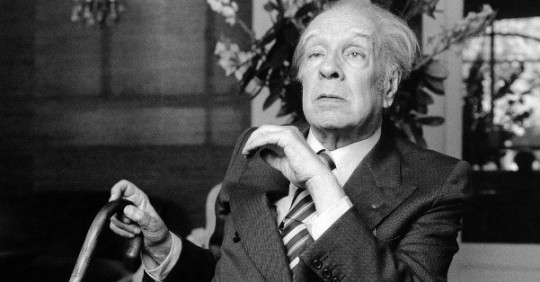
Since Borges was little, he was surrounded by foreign languages, at home he spoke English and Spanish, and, later, learned German and French. His reading was done mainly in foreign languages, focusing mainly on English texts.
“For Borges, Translation was not about transferring a text from one language to another, but rather to transform one text into another” (Mermoud, 2015). He stated that translation, even literal ones, changes their meaning due to the inherent changeability of texts according to the reader and to the place and time of reading.
This translator believed that high-quality translations could enrich or improve the source text since it provides, to any type of text, nuanced meaning, connotation, and association. According to Mermoud (2015), “Borges enjoyed leafing through different translations of the same text, often as a literary exercise, maintaining that any changes in linguistic code were encouraged in his opinion and at times necessary”.
Borges’ translation method/philosophy goes along with the belief that the work itself is “ultimately more important than its creator”. In that sense, Borges applied his own translation method which consisted of eliminating redundant or unnecessary elements in the source text, removing what he called “textual distractions” and adding nuance, or changing the tile, among other things. Borges is responsible for some of the best and most beautiful writings as well as translations.
Do you want to check one of his translations? Below you will find his translation into Spanish of a Whitman poem.
SONG OF MYSELF
I celebrate myself, and sing myself,
And what I assume you shall assume,
For every atom belonging to me as good
belongs to you.
Whitman
CANTO DE MÍ MISMO
Yo me celebro y yo me canto,
Y todo cuanto es mío también es tuyo,
Porque no hay un átomo de mi cuerpo
que no te pertenezca.
Translated by Jorge Luis Borges
Edward George Seidensticker
Edward Seidensticker was a translator, Japanologist, historian, author, and educator who was born on February 21, 1921, in Castle Rock, Colorado. His family had some financial struggles, which is why he attended the University of Colorado at Boulder and graduated with a degree in English in 1942.
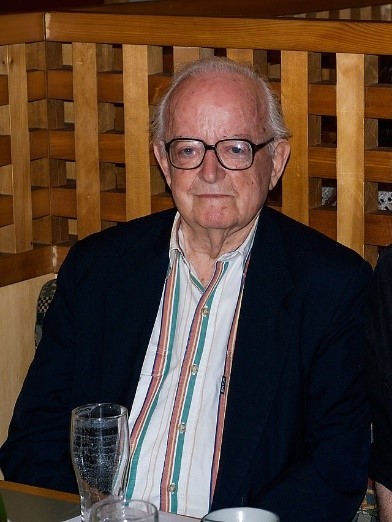
His first approach to Japanese language and culture began during World War II, while he was accompanying the U.S. Marines ashore at Iwo Jima in his capacity as a language officer. Since then, his passion for the language has only increased.
Seidensticker traveled to Japan to work as a foreign service officer of the United States. Afterward, he decided to study Japanese literature at the University of Tokyo and focused on the modern side of literature. In the middle of the 1950s, he worked as a lecturer of both American and Japanese literature at Sophia University. “While there he became acquainted with some of Japan's most revered authors and began translating their masterpieces for American readers” (Fox, 2007).
During his lifetime, Seidensticker translated more than a hundred literary Japanese works, making able for English speakers to read authors, such as Yasunari Kawabata and Yukio Mishima, among others. He is considered one of the best Japanese literature translators due to his capacity to convey the same nuances and emotions that are portrayed in the source text.
In 1971, Edward won the National Book Award in the category of Translation for his version of Yasunari Kawabata’s “The Sound of the Mountain”.

His edition of “The Tale of Genji”, an 11th-century epic of love and intrigue written by Murasaki Shikibu, was praised by critics. This translation took Seidensticker more than ten years. Sadly, he died on August 26, 2007, in Tokyo, Japan.
Now you know some of the most important, famous, and proficient translators in history. There is a long list of people worth mentioning, so why not? Comment below other translators that we should talk about in the next post!
Salto de página
References:
Costa, W. C. (1996). Borges and Textual Quality in Translation. Cadernos de tradução, 1(1), 115-135.
Faulwetter, K. (2018, February 28). St. Jerome and the First Sense-for-Sense Method in Translation Studies. Motaword. https://www.motaword.com/blog/st-jerome#:%7E:text=Jerome%20coined%20the%20field%20phenomenon,than%20%E2%80%9Cword%20for%20word%E2%80%9D.
Fox, M. (2007, August 31). Edward G. Seidensticker - Obituary. The New York Times. https://www.nytimes.com/2007/08/31/arts/31seidensticker.html
Mermoud, M. (2020, September 9). Stories of translators: Jorge Luis Borges. Cultures Connection. https://culturesconnection.com/stories-of-translators-jorge-luis-borges/
Moser, C. (1988). Translation: The achievement of Constance Garnett. The American Scholar, 57(3), 431-438.
Nguyen, M. (2005). Prologue of the Gospel of St. John from the Clementine Vulgate [Photograph]. https://publisher-publish.s3.eu-central-1.amazonaws.com/pb-ncregister/swp/hv9hms/media/20200828040816_5f4868edc2bf74d8cce1d2ecjpeg.webp
Panetti, D. (1500). Saint Jérôme [Saint Jérôme]. Abbaye de Chaalis - Musée Jacquemart-André, Paris, France. https://upload.wikimedia.org/wikipedia/commons/thumb/3/38/Domenico_Panetti_-_St_J%C3%A9r%C3%B4me.jpg/467px-Domenico_Panetti_-_St_J%C3%A9r%C3%B4me.jpg
#dark acamedia#translation#language#linguistics#light academia#culture#writing#writerscorner#learning#literature#interesting
4 notes
·
View notes
Text
Translator Skills
by Dayana Alcarraz
Have you ever wondered what a translator needs in order to be a good translator?
There is a bunch of stereotypes about being a translator that you might have heard if you are interested in becoming one and a very common quote is: “If you’re bilingual, you can work as a translator.” This is only half true considering that, according to Juliane House (2017), there are three essential skills a translator needs in order to be successful. The first one is “source language receptive competence” (in simple words: you need to be able to understand in a deep level the content of the source text or source text processing skills). The third one is “a mastery of target linguistic resources” (this means that a translator also needs to have domain over the target language and its linguistic elements or target text-related skills). However, the second competency that a translator needs in order to be considered good is to possess “transfer skills”.
You might be wondering what the author meant by that, and it is related to ability of being able to put into the target language the source text with accuracy. There are other important components in the translation process called extra-linguistic elements that may also influence the final product a translator can produce that include: competence, professional competence, strategic competence, and cultural competence.
Do you want to guess which competence is considered the most important one if you needed to translate a text from a language to another?

If your answer was “transfer skills”, you were completely right. Actually, transfer competence is the one that differentiates a bilingual person from a translator, it is the supreme translation skill that a person needs to produce good translations.
If we viewed the translation field as a game, the transfer competence would be a special skill acquired through the completion of valuable side quests called extra linguistic competences. They allow the translator to become the mediator between the two languages they are working with and all they imply considering that languages are living organisms that represent a whole culture and a whole community of speakers.

It is important to mention that the other skills (source and target language skills) are also important because being deeply familiar with the tools that are going to be required in the process of translation (languages) is pretty important, but what makes a translator a good professional is the ability of being an effective mediator between these two different worlds. There are aspects such as lexico-grammatical and pragmatical differences that a translator must know how to face by using the language properly and acknowledging those differences.
But, what does translation competence depend on?
The answer might seem simple because it can be expressed by a single word, but it is quite complex. It depends on situation which is the different items that can influence the translation process and how it is received by the target public. It involves: the agents, the function of the translation, existing norms, constraints, etc. The difficulty of the process of translation will depend on how complex the items of the situation are.
To explain it a little bit better: there are situations in which, for example, lexico-grammatical items’ correctness is less important than others (when translating or interpreting informal situation such as: a meme for a group of friends). Therefore, daily situations in informal contexts are going to represent less of a challenge for a translator’s competency than more formal situations in which correctness and other different aspects like cultural background, accuracy and faithfulness of words, and other important factors are required (like a peace treaty between different nations).
Another important point that is pertinent to address is the fact that knowledge plays a vital role in translation.
A person who has no knowledge on a topic cannot understand, process, and translate that information into a target language if they’re not familiar with it. That is why it is so important to possess a wide range of knowledge on as many topics as possible, to know about specific topics we are especially interested in translating, and to be capable of researching those topics we are not familiar with. Translating is a very complicated process considering that the translator must take into account a thousand and one factors to make sure that the translation they are delivering is actually valuable content. There are many socio-cultural situations that must not be ignored.
To sum it up, a translator must know many things very well in order to put those concepts that were expressed in a language into another language.
To complement what Juliane House wrote in her book, I found an interesting article that includes 17 useful skills that a translator should develop in order to reach professional success. I will talk about three points that I considered particularly pertinent and important enough to include in this post.
The first one is: Cultural knowledge
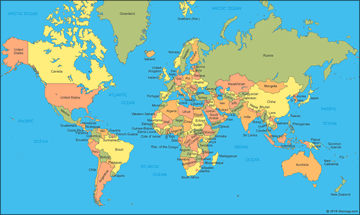
Knowledge was mentioned previously, but a branch of anthropological knowledge that I consider incredibly important is culture. Many linguistic situations such as sense of humor, what is considered appropriate or not, what is relevant to be told, the festivities social groups have, etc. are meant to be understood by having a good understanding of the culture behind the language we are translating from or the target language.
Second: Computer-assisted translation (CAT)

Nowadays we count with many technological tools that can facilitate the process of translation and we should know the most useful ones if we want to produce good translations. Those tools include different types of software: language search engine, terminology management, translation memory, interactive machine translation, and text alignment. Those are some of the important areas in translation that can be done more efficiently with the help of appropriate operative systems.
Third: Creativity

The same way that it is important for a translator to know how to write properly, it is important for them to be creative with the challenges they must face in their translations. Some areas (like the field of literary translation) require more creativity to translate a text than others (instructions to solve a puzzle), but translators must act almost as second writers when they face a challenging creative decision.
House, J. (2017). Translation: The Basics. Routledge.
Indeed Editorial Team. (2021, March 1). Translator Skills: Definition and Examples. Indeed Career Guide. https://www.indeed.com/career-advice/resumes-cover-letters/skills-of-a-translator
#translator#translation#my work#dark acamedia#interesting#bilingual#languages#culture#science#linguistics
5 notes
·
View notes